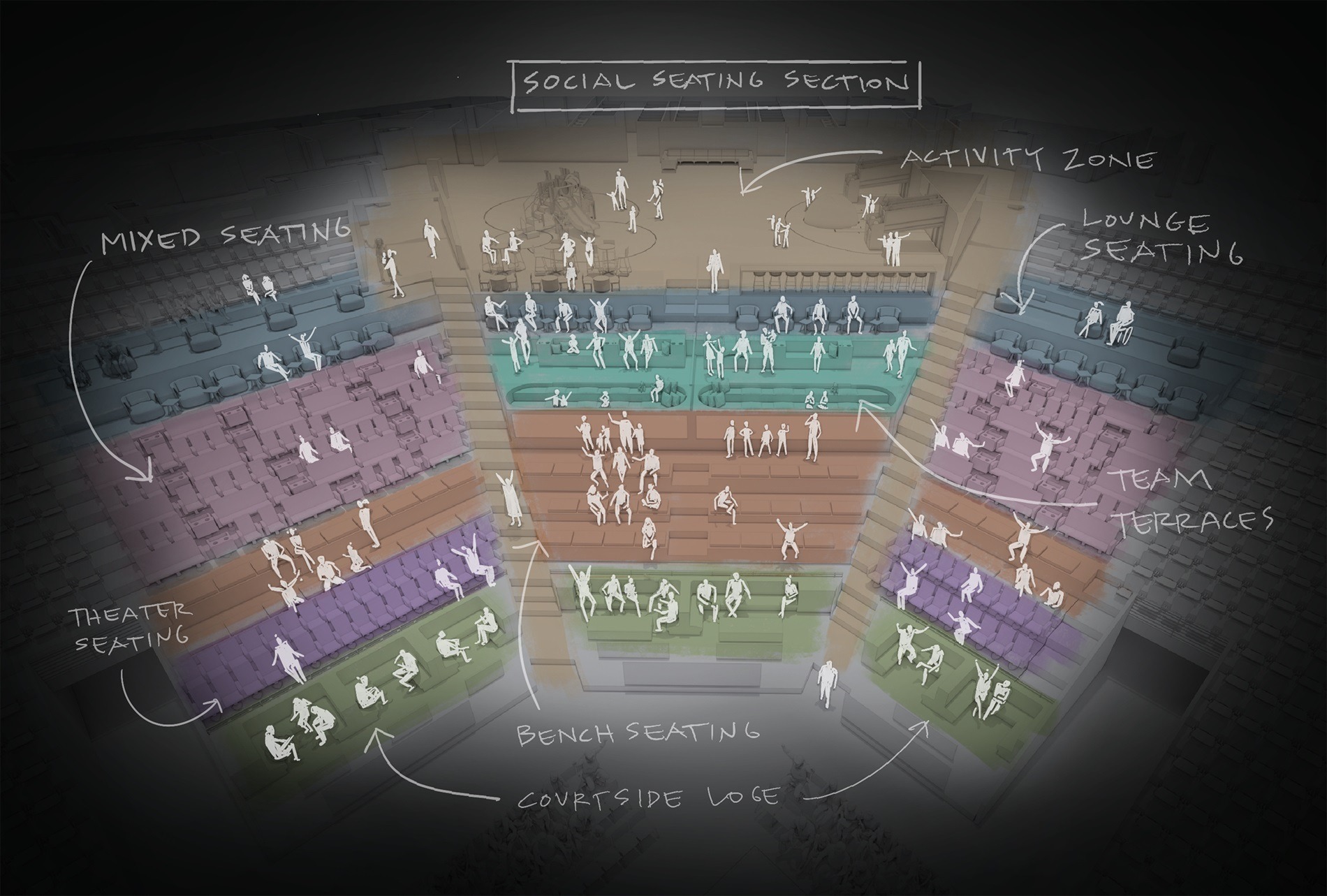Sports Business Journal’s Bret McCormick spoke with Melissa Clark, a senior project manager for HOK’s Sports + Recreation + Entertainment practice, about how the firm is reimagining venues for women’s sports.
Clark and a group of female sports-minded interior designers, architects and engineers joined forces to discuss their current project work, client feedback, fan demographic data and emerging trends. They used this information to develop design concepts for women’s sports venues that are more strategic and sophisticated.
The long-term goal? Shift the industry paradigm to make stadiums, ballparks and arenas more inclusive for female athletes and fans, many of whom are first-time visitors to the stadium. Their research and visuals explore new ideas for key spaces, including the seating bowl and the athlete arrival experience.
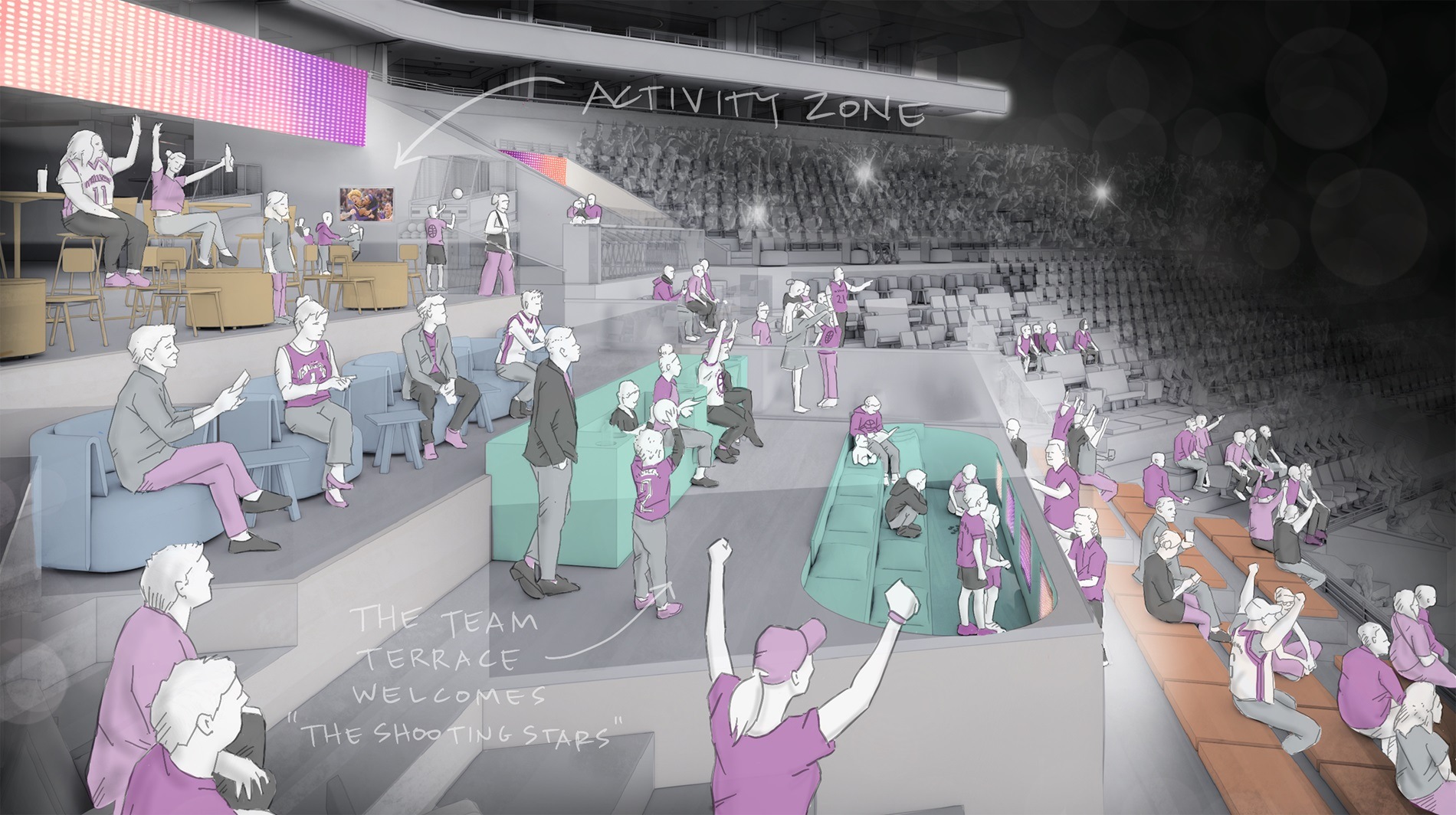
Excerpted from Sports Business Journal:
Diverse Seating Products
Because studies have shown there are more first-time fans who want to socialize with each other at women’s pro sports events, there is a more social, collegial environment. Clark and company envisioned an entire section of a stadium featuring different seating types designed around the enthusiasm of this socially oriented group of fans.
Picture a corner quartile of a lower seating bowl including:
- Courtside or pitchside loge boxes at the field level for six to 10 people.
- Deep bench seating in one area, intended for groups and meant to be flexible.
- Movie theater seating.
- A rail seating type, maybe with an adjoined cooler and table.
- At the top of the seating section, a super riser ideal for a youth team, in which parents could sit at the back with their kids in front of them.
- And above the section on the concourse, drink rails and other places to stand and lean, connected to a concourse area offering food and beverage and activities that was expressly connected to the social seating section.
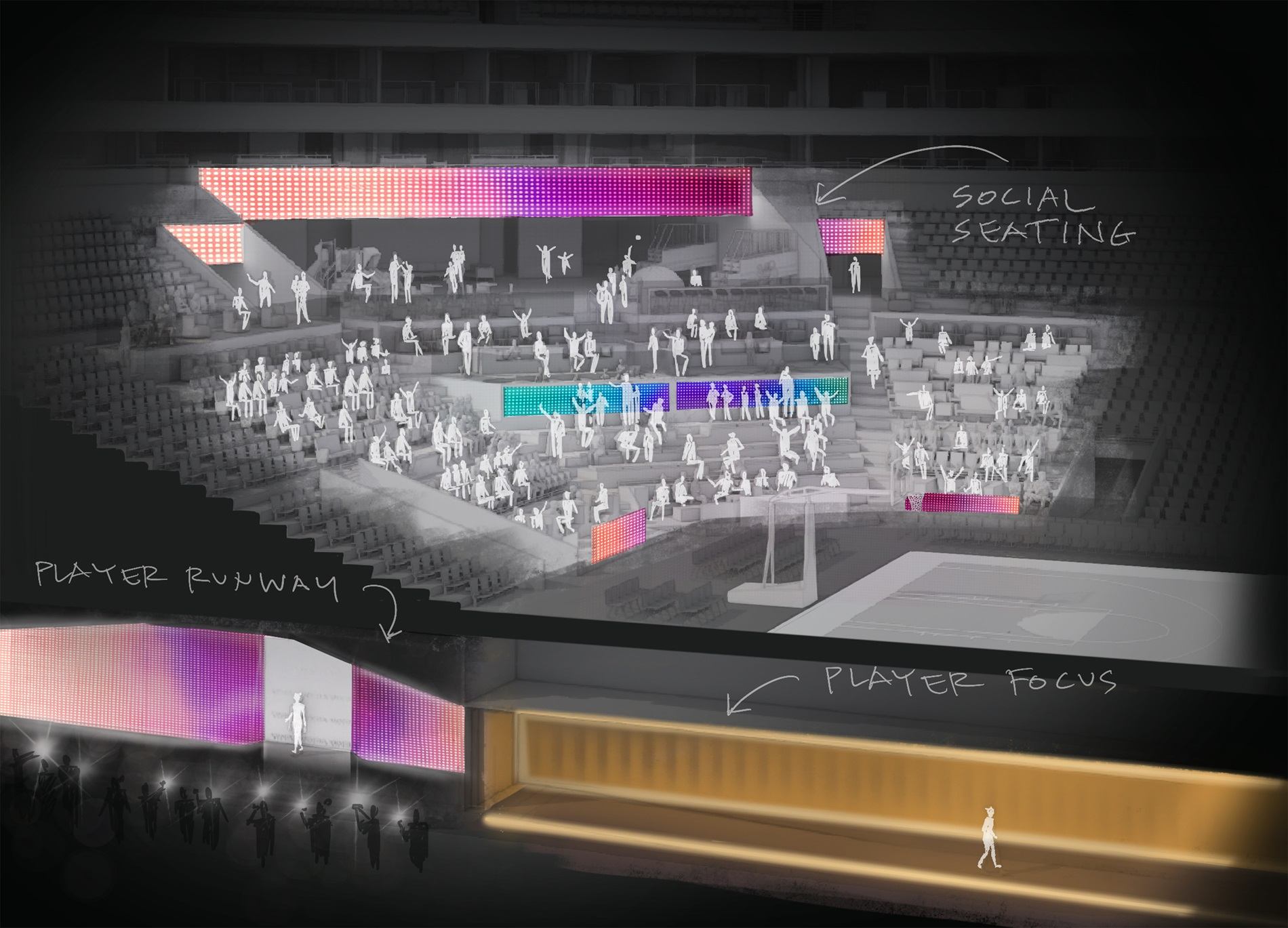
That reimagining of a seating section away from uniform seating rows or the intensity of a supporters section could speak to women’s sports fans in a more meaningful way. It also could be used to tie together the venue for fans and players.
The Player Arrival Experience
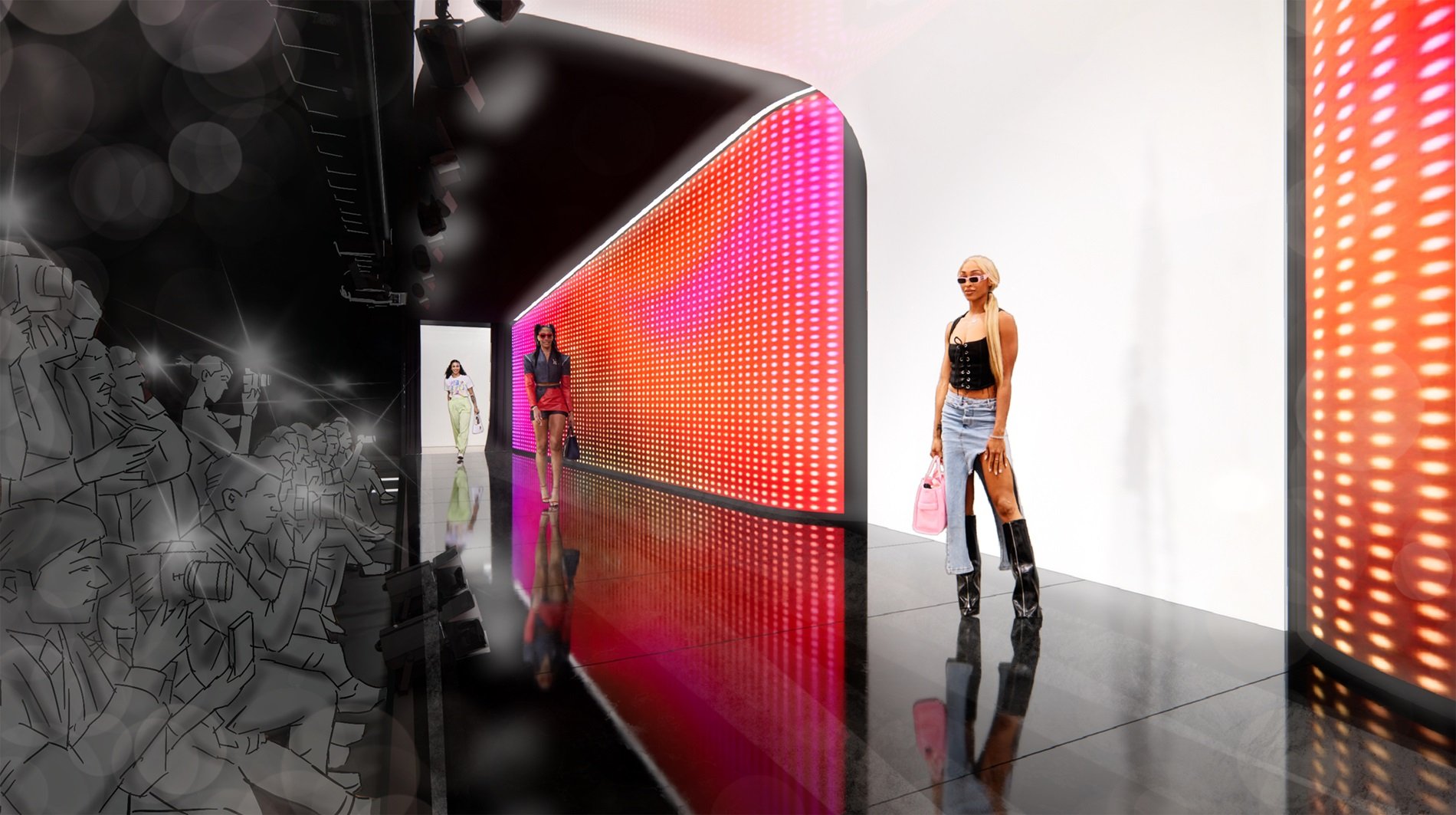
Player arrivals have become a thing in the WNBA. Fashion-forward athletes’ outfits and accessories—whether their own brands or designers they’re endorsing—are foundational parts of any pregame broadcast coverage and shared widely on social media.
The spectacle is undone a bit by the backdrop, whether a bypassing forklift, a worker rolling a keg or just the gray, undecorated concrete that clearly denotes “arena back-of-house.” What if the setting more suited the fashion statements made by the players? The fit walk has become a key game-day moment in a women’s sports world where brands can play an outsized role. According to a Wasserman Collective study, 58% of women’s sports fans are more likely to think positively about a brand that sponsors women’s sports (compared to 38% of fans of men’s sports).
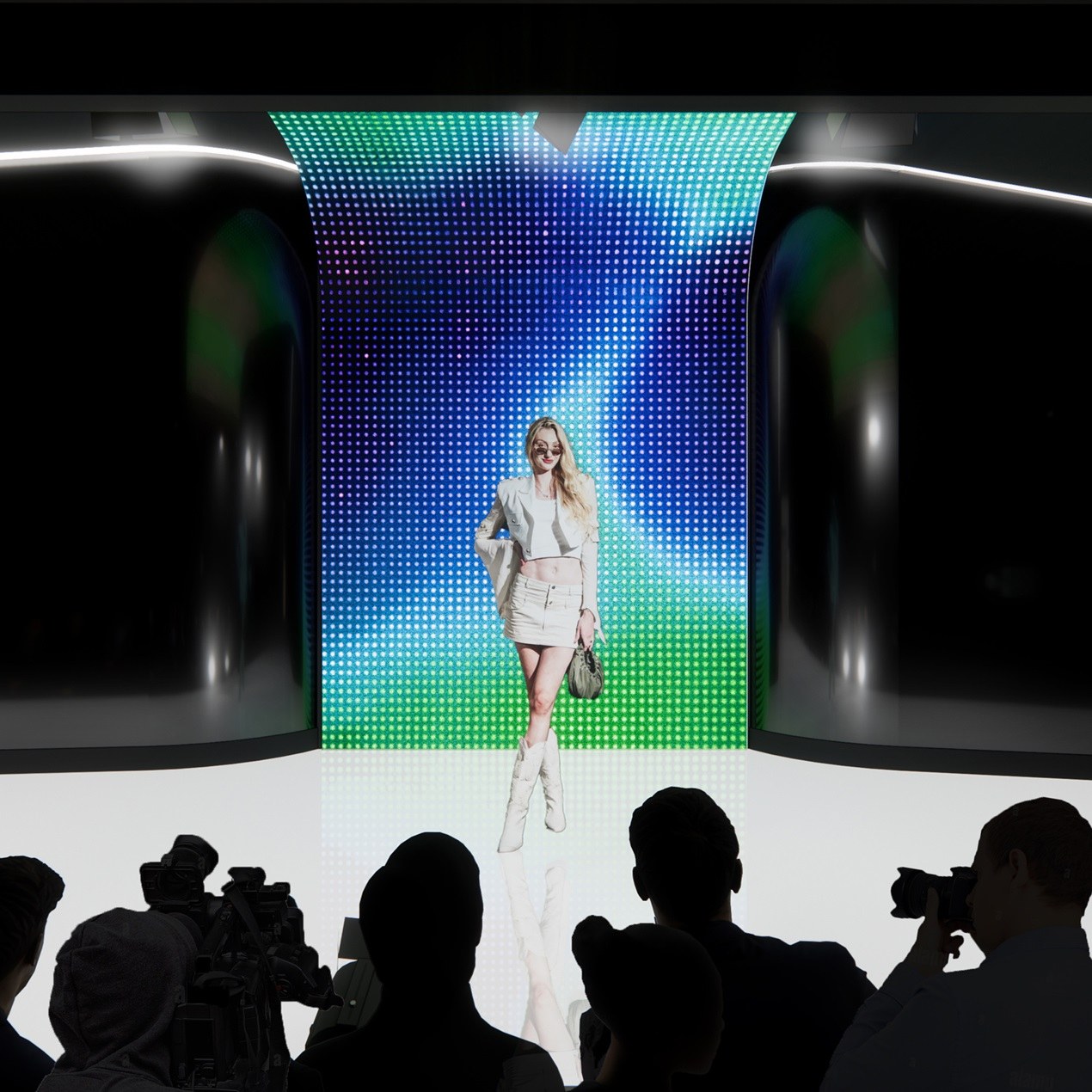
Retrofitting a space more suited to the fit walk could be done relatively inexpensively by, for example, building a platform—akin to a fashion runway—with a programmable LED backdrop, high-quality lighting and a camera track in the ceiling above. A photographer/video pit midway near a pose zone would enable broadcasters and other media to capture the players’ entrance (which they’re already doing), and an event, team or player’s branding would flash on the LED wall behind. After stopping on the runway, players would then pass through what Clark called a “mindset path,” that refocuses the player on the game to come before reaching the locker room.”
Read more from HOK’s leaders about the growth and impact of women’s sports.




